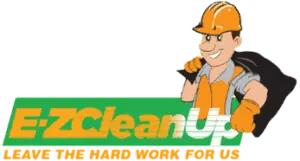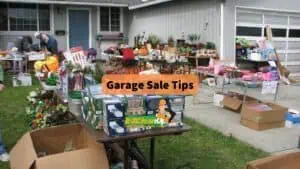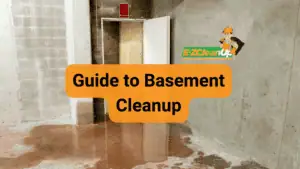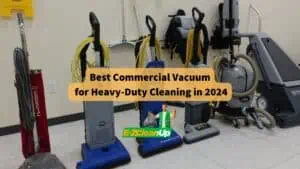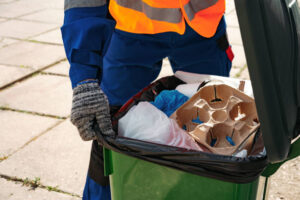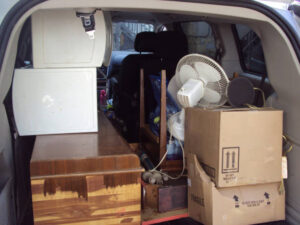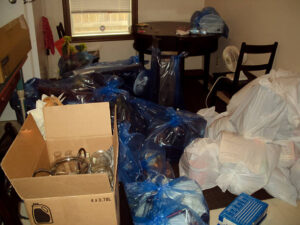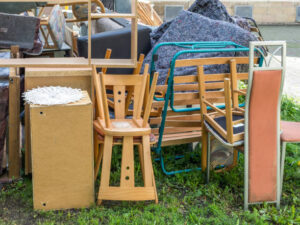When tenants move out of your rental property, you’re often left with more than just an empty unit. From abandoned furniture to forgotten belongings and general mess, clearing out a rental property can be overwhelming. This comprehensive guide will walk you through the entire process, ensuring you handle everything legally, efficiently, and cost-effectively.
Understanding Your Legal Obligations
Before you start tossing items into a dumpster, it’s crucial to understand your legal responsibilities. Every state has different rules regarding what landlords can and can’t do with the abandoned property after a tenant is evicted. Failing to follow proper procedures could result in legal issues down the line.
If the lease does not say anything about property left behind, then the landlord must move or store the tenant’s belongings, even if they think they are trash. Additionally, they must notify the tenant of the location where the belongings are being stored within 7 days of move-out, and/or give 30 days’ notice if they are planning to dispose of the tenant’s belongings.
Key Legal Steps:
- Verify the tenant has actually moved out – Before you start tossing items in the dumpster, you need to verify that the tenant has actually moved out. In some cases, tenants might leave belongings behind because they plan to return for them, or they may have temporarily vacated due to an emergency.
- Document everything – Take photos and create an inventory of abandoned items
- Send proper notice – When you send the notice, be sure that you request a return receipt. This will give you proof that the tenant received the notice should they not claim their belongings and return at a later date.
- Follow state-specific holding periods – Most states require 15-30 days before disposal
Step 1: Initial Property Inspection
Before taking any action, conduct a thorough inspection of the rental unit to assess its condition and identify any abandoned property. Walk through every room systematically, including:
- All closets and storage areas
- Attic and basement spaces
- Garage and outdoor storage
- Kitchen cabinets and appliances
- Bathroom cabinets
Common belongings tenants leave behind include clothing, furniture, electronics, and other personal items. Make detailed notes and take photographs for your records.
Step 2: Sorting and Categorizing Items
Once you’ve completed your inspection, sort items into categories:
Trash vs. Valuables
Some “belongings” don’t amount to anything of value — we’re talking about trash. Generally, landlords are free to dispose of old bottles, wrappers, and other obvious garbage. Just make sure you’re not potentially tossing any memorabilia or important items that look worn but may have been important to the tenant.
Items to Consider:
- Obvious garbage – Empty bottles, food containers, broken items
- Potentially valuable items – Electronics, furniture in good condition, appliances
- Personal documents – Should be stored carefully pending tenant retrieval
- Donations – If there are usable items like furniture, clothing, or kitchenware, donating them to a local charity may be a good alternative to tossing them in a landfill.
Step 3: Removal Options
You have several options for clearing out the property:
1. DIY Removal
For smaller cleanouts, you might handle the work yourself with help from friends or family. This is the most cost-effective option but also the most time-consuming.
2. Dumpster Rental
If the house is completely filled with junk, renting a dumpster may be the quickest way to get everything hauled away. This works well for properties with large amounts of debris and allows you to work at your own pace.
3. Professional Junk Removal Services
If you don’t want to deal with the hassle of cleaning everything out yourself, consider hiring a junk removal company. They’ll clear the property quickly and dispose of the waste properly. While more expensive than DIY, the time and energy you will save by having them empty out your rental property could save you money in the long run by having your unit available to rent out sooner.
4. Donation Services
If there are leftover items that are gently used and could be of use to those in need, separate these items from the rest of the items that will end up in the trash. You can haul these items to local donation centers yourself or you can hire a junk removal company to do the hauling and donating on your behalf.
Step 4: Deep Cleaning the Property
Once the leftover junk is cleared out, the property itself will probably need some serious attention. Former tenants who leave behind a house full of junk typically haven’t been maintaining the space well, so a deep cleaning is necessary before listing the property again.
Complete Cleaning Checklist:
Kitchen:
- Deep clean the oven, stovetop, and microwave, removing all food residue and grease. Scrub the inside of the refrigerator, remove unnecessary items, and ensure the freezer is free of frost.
- Clean inside and outside of all cabinets
- Scrub countertops and backsplash
- Polish sinks and fixtures
Bathrooms:
- Making sure the bathrooms are spotless is crucial before showing your rental property to prospective residents. Thoroughly scrub and sanitize all toilets, sinks, showers, and tubs in your home to remove any soap scum, mold, mildew, or rust.
- Clean mirrors and polish fixtures
- Scrub tile and grout
Living Areas:
- Vacuum the floors and wipe down the shelves and cabinets throughout the house.
- Dust and wipe down any surfaces throughout your home. Use an all-purpose surface cleaner and a clean microfiber cloth to wipe down countertops, banisters, bookshelves, windowsills, mantles, and any other hard surface. Remove any cobwebs and dust from ceiling fans, lighting fixtures, and window blinds.
Floors:
- Vacuum the flooring throughout the rental to pick up any remaining bits of dirt and debris, making sure not to neglect stairs, closets, and any other nooks and crannies. Once you’re done, mop any hardwood, vinyl, tile, or linoleum flooring.
Walls and Repairs:
- Walls that have been left with nails, drywall anchors, hooks, or general damage to them should be removed and repaired as needed. If there are only a handful of cleanly hung nails or hooks, they can likely stay without bothering your new tenants. After you’ve removed all the leftover hardware in the walls, patch up any distracting holes.
Step 5: Handling Security Deposits
If the tenant left behind significant messes, damage, or cleanup expenses, you may be able to deduct these costs from their security deposit. Make sure to:
- Document all cleaning and removal costs with receipts
- Take before-and-after photos
- Provide itemized deductions to the tenant
- Follow your state’s timeline for returning deposits (typically 14-30 days)
Preventative Measures for Future Tenants
To minimize cleanup headaches in the future:
Include Clear Lease Clauses
It’s always a good idea to include a clause about abandoned property in your rental contract. Talk to your advisor or lawyer about adding a belongings clause to your contract: State that there will be a disposal fee for excessive trash or abandoned property left behind. Specify that belongings must be disposed of. Include the potential for a separate agreement for storage as needed (i.e., you can offer to keep the former tenant’s furniture on the property for a specific period until they can pick it up).
Conduct Regular Inspections
Make a habit out of regularly inspecting properties during the lease term. This can help you identify potential hoarding issues or signs that a tenant may be preparing to leave without notice. If you suspect a problem, addressing it early can save you from a massive headache down the road.
Provide Move-Out Checklists
Before the lease ends, send tenants a move-out checklist, reminding them of the expectation to return the property to its original condition. This sets clear expectations and reduces the likelihood of abandoned items.
When to Hire Professional Help
If you’re pressed for time or want your rental unit to be as spick and span as possible, we recommend hiring a professional cleaning company to help handle the mess. Consider professional services when:
- The property requires extensive deep cleaning
- There’s significant furniture or appliance removal needed
- You need to minimize vacancy time between tenants
- The property has specialized cleaning needs (pet odors, smoke damage, mold)
Conclusion
Clearing out a rental property after tenants move out doesn’t have to be overwhelming. By following proper legal procedures, systematically sorting and removing items, and thoroughly cleaning the property, you can have your rental ready for new tenants quickly and efficiently. Remember to document everything, understand your state’s specific laws regarding abandoned property, and consider whether professional help might save you time and money in the long run.
The key to success is organization, attention to detail, and maintaining good records throughout the process. With the right approach, you’ll minimize vacancy time, protect yourself legally, and ensure your property is in excellent condition for the next tenant.
References
- Green Residential – What to Do When a Tenant Leaves Behind a House Full of Junk: https://www.greenresidential.com/what-to-do-when-a-tenant-leaves-behind-a-house-full-of-junk/
- RentPrep – How To Clear Out Prior Tenants’ Belongings: https://rentprep.com/blog/landlord-tips/property-left-behind-when-a-tenant-moves-out/
- Azibo – A Move Out Checklist for Landlords and Tenants: https://www.azibo.com/blog/move-out-checklist
- Hometown Dumpster Rental – Rental Cleaning Checklist for Property Managers and Landlords: https://www.hometowndumpsterrental.com/blog/rental-cleaning-checklist-for-landlords
- Justia – The Tenant Move-Out Process & Legal Requirements for Landlords: https://www.justia.com/real-estate/landlord-tenant/information-for-landlords/moving-tenants-out-and-returning-security-deposits/
